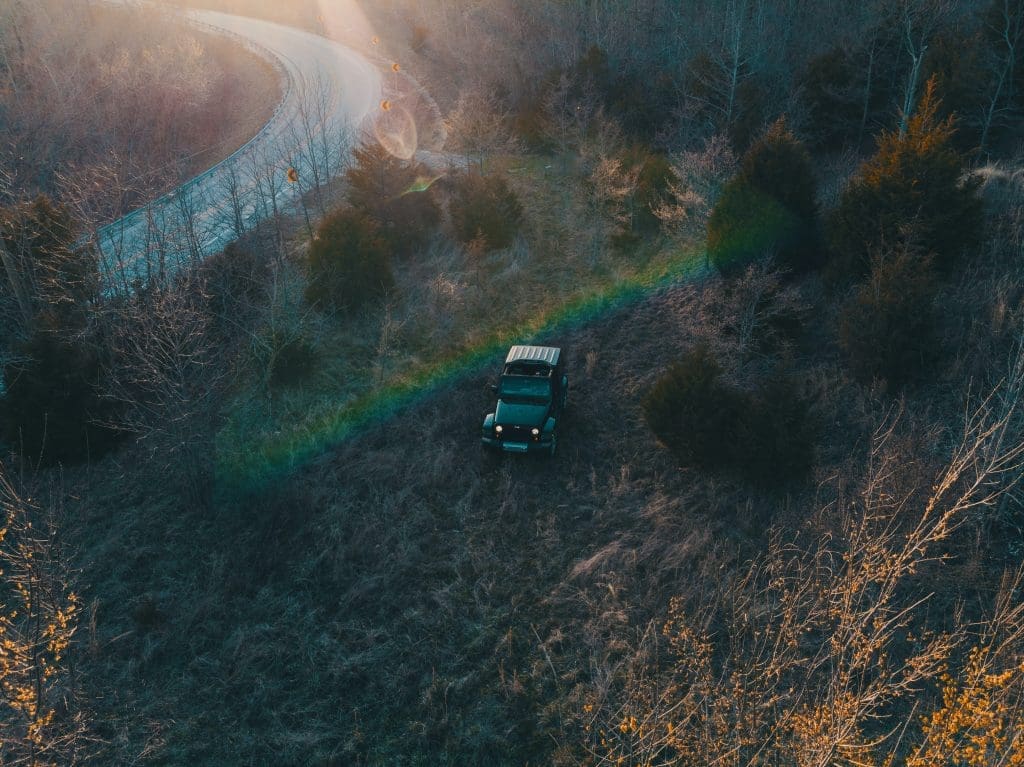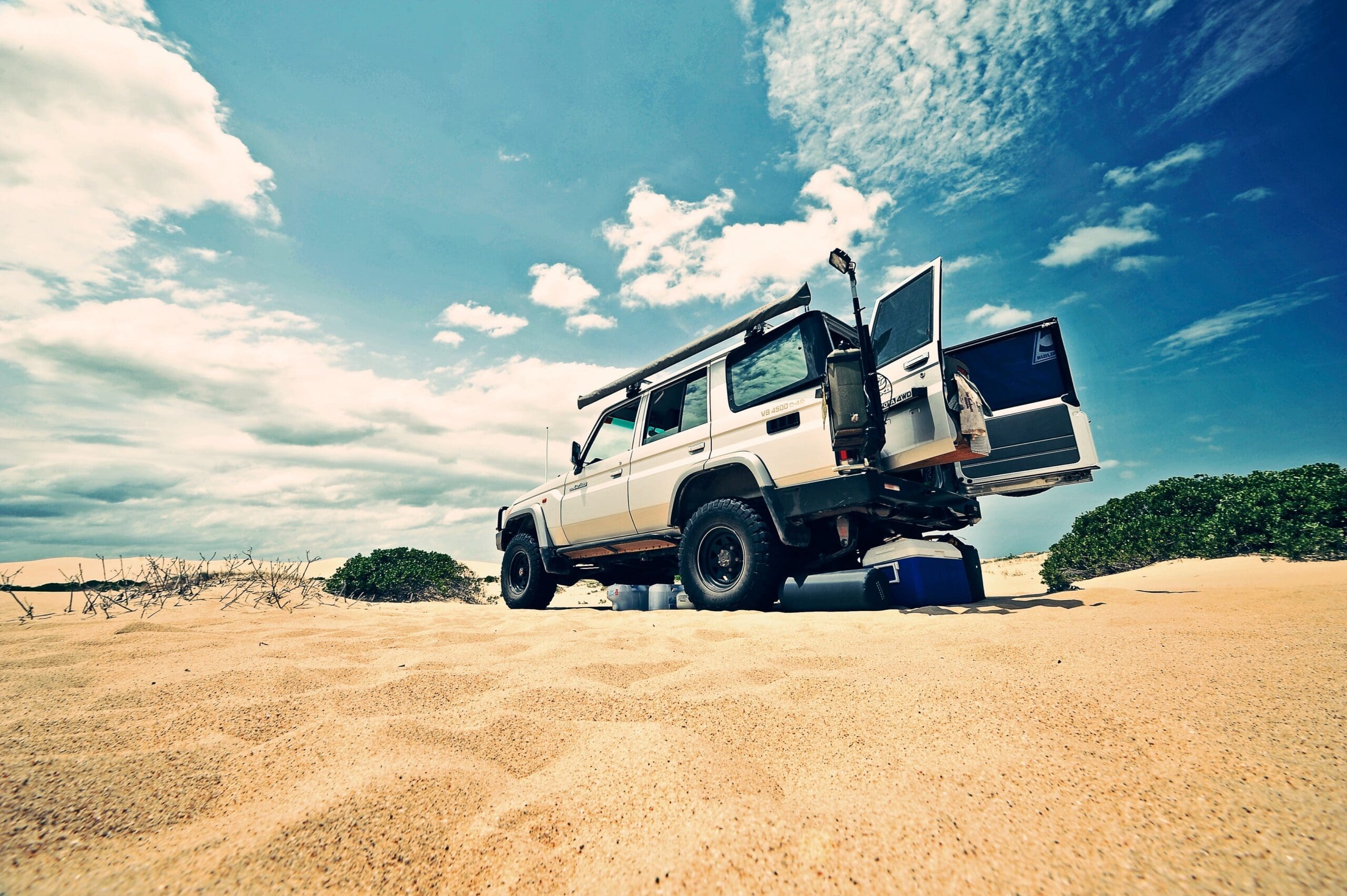On-Board 4WD Accessories to Ensure a Safe and Successful Off-Road Trip
4WDs are specifically designed to go where mere vehicles can’t, allowing owners to go and see spectacular places. And in this SUV-crazed day and age, where soft-roaders flourish, many people confine the serious 4WDs to the suburbs and cities, daydreaming they’ll one day dirty the tires. If you’re a 4WD owner and are planning your first trip away from the urban jungle and into the vast Australian outback, you’re probably excited and nervous at the same time. Does your 4WD have what it takes to tackle the rough Australian off-roads? What’s the worst thing that can happen when you’re hundreds of kilometers away from the nearest town? All these questions can leave you anxious and hesitant, which is why you need to do whatever you can to ensure you’re adequately prepared including 4WD accessories.

So how do you prepare yourself, and more importantly – your 4WD for the adventure ahead? There’s a big difference between a stock 4WD and a fully-equipped off-roading one. But what does fully equipped mean? While you can make a few modifications to your vehicle to improve its off-road performance, many people overlook the 4WD accessories that make a living off the beaten trail easier. And you’ll know which off-road 4×4 accessories you’re missing only when you’ve been out and about without them. To save you the trouble of going through a lot of trial and error, I’ve assembled a list of indispensable 4WD accessories that won’t break your bank, yet will come in very handy in many situations.
Recovery Tracks
You’ll eventually find yourself stuck in some muddy terrain, and your 4WD will have a difficult time driving out. The safest way to recover a vehicle is with the help of recovery tracks. Recovery tracks help your vehicle gain momentum by providing your tires traction, allowing it to drive out. Snatch recovery and winching are also a good solution, but they require a large amount of energy at once, and you’ll still need something nearby to latch onto, which won’t always be the case. Plus, winches can be expensive and bulky, whereas recovery tracks are far more affordable and don’t take up nearly as much space, allowing you to store them neatly in your cabin or trunk. Furthermore, recovery tracks can double down as shovels, enabling you to dig around your tires before placing them to make recovery even easier.
Tire Inflator and Deflator
When you drive your 4WD off the road, you’ll need to let out some of the air from your tires to give them more flex so that they can provide more grip. A tire deflator that features a gauge can make sure your tire pressure is always exactly where you want it to be. However, once you get back on the road, you’ll want to reverse this process for your safety and the safety of everyone else you share the road with. You can use a manual inflator to pump the tires back up, but that requires time and effort. Instead, get a tire pump that can be powered off of your vehicle’s battery to quickly re-inflate your tires to the necessary pressure when you leave the trail and go back to the tarmac.
4WD Accessories Tool Kit
While tool kits aren’t considered a 4WD accessory, they’re still something that you should always have on you in the event of a breakdown. The rough terrain may cause something to get knocked loose, so you’ll need to perform some repairs. Most of the time, damage to your 4WD won’t be fixable properly while you’re still off the road, so instead, it’s a good idea to keep some things, such as tape, wire, and metal putty in the tool kit, as well as a few spares and some common tools. You can patch up things such as a gauged oil sump or a cracked diff housing with metal putty, and there aren’t many things that can’t be taped back onto the vehicle. And in terms of spare parts, you should consider getting a few extra filters for your fuel and air, especially if you’ll be driving in dusty environments (which you most likely will), as well as bulbs, belts, and a couple of other consumables that can be easily damaged or worn out.


UHF Radio
A UHF radio can go a long way in helping you and other people feel safe when hundreds of kilometers away from civilization. Get familiar with the different channels you can use and use the radio to contact other people on the trail to keep up with safety, weather, and other environmental warnings. Additionally, the UHF radio can give you peace of mind knowing you have a lifeline to emergency services in the event that something goes terribly wrong. There are many different radios available, – which you can all find at Walcott online CB shop – each suited for a different purpose. So make sure you read up and understand what type will suit your needs best.
Esky or Fridge
If you’re going remote and want to cook up some food and drink some cold beverages, you’re going to need something to keep all of these products fresh and cold. There are a few different types of Eskys and fridges available, and depending on the length of your trip, you’re going to need a different sized one. Esky and iceboxes are ideal for a few days away without any power, and all you need are a few ice bags and blocks. If you intend to keep food cold in a portable solution, a thermos cooler is probably the best way to keep drinks and food cool without a compressor weighing you down. Lastly, there are fridge-freezer models that provide a great way to keep food and drinks below zero. However, these models will require more power to keep running, at which point you might also need a power inverter.
Power Inverters and Leisure Batteries
If your travels will be longer than a few days, and you want to power things like your fridge, TV, and other 240V devices, you’ll need a power inverter. Some people prefer permanently wired power inverters, especially for running larger devices. Still, some models simply plug into your 12V cigarette lighter port and let you charge smaller devices as well. The more serious and larger you want your setup to be, the more likely it’s that you’ll need a leisure battery, so you might want to consider looking for a dedicated deep-cycle leisure battery as well, as they’re designed for this type of use more so than your starter battery is. But before you buy a leisure battery or power inverter, make sure you write down all the appliances and devices you’ll want to be powered at the same to ensure you get a product with enough power output to handle them all at once.
If shopping for a leisure battery, make sure you different types of leisure batteries (lead-acid, AGM, Gel, Lithium). Some of these batteries are better suited for some applications than others, so you want to make sure you get one that’s going to serve the purpose you need it to while ensuring you stay safe in the event your vehicle tips over.




